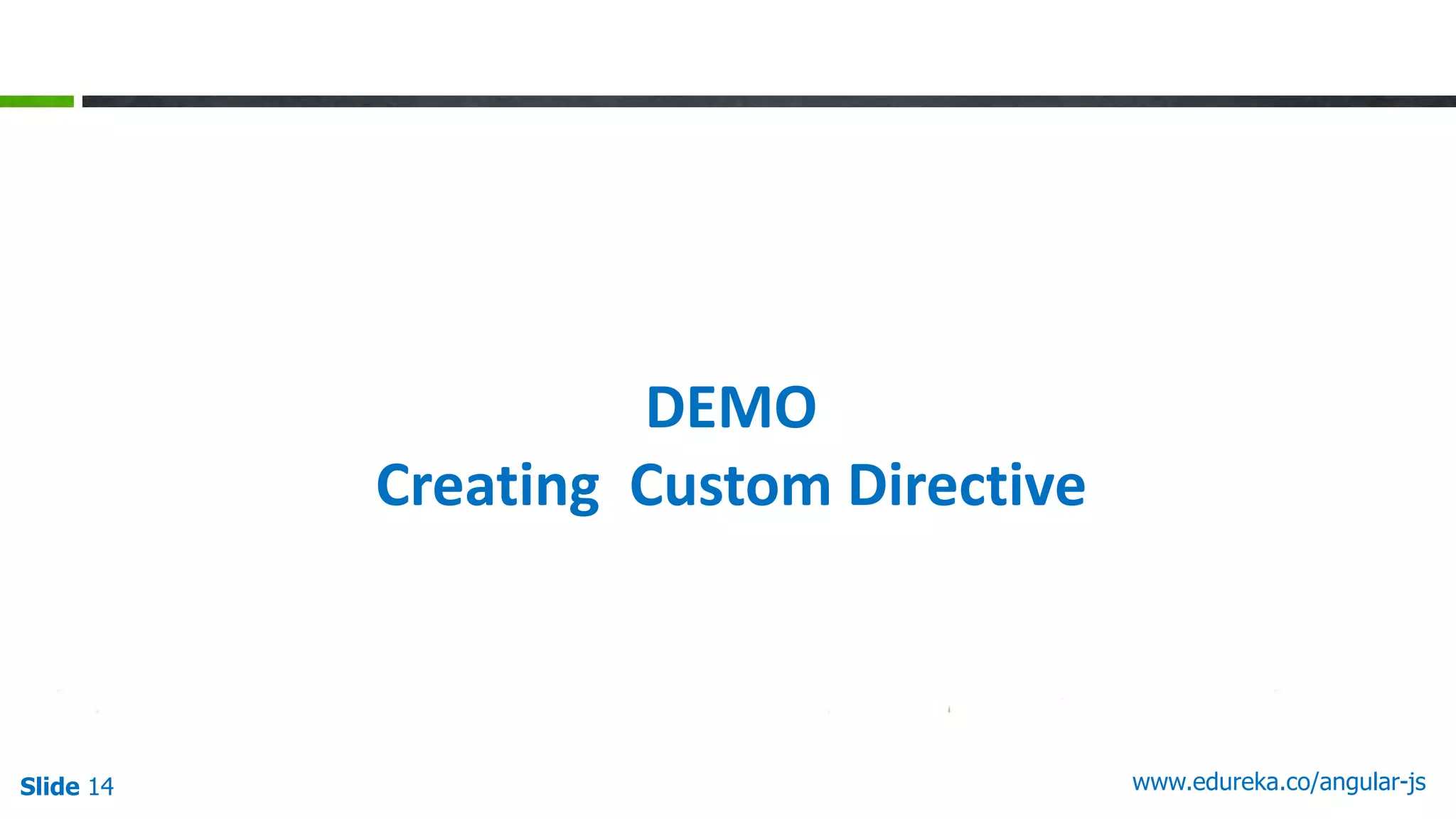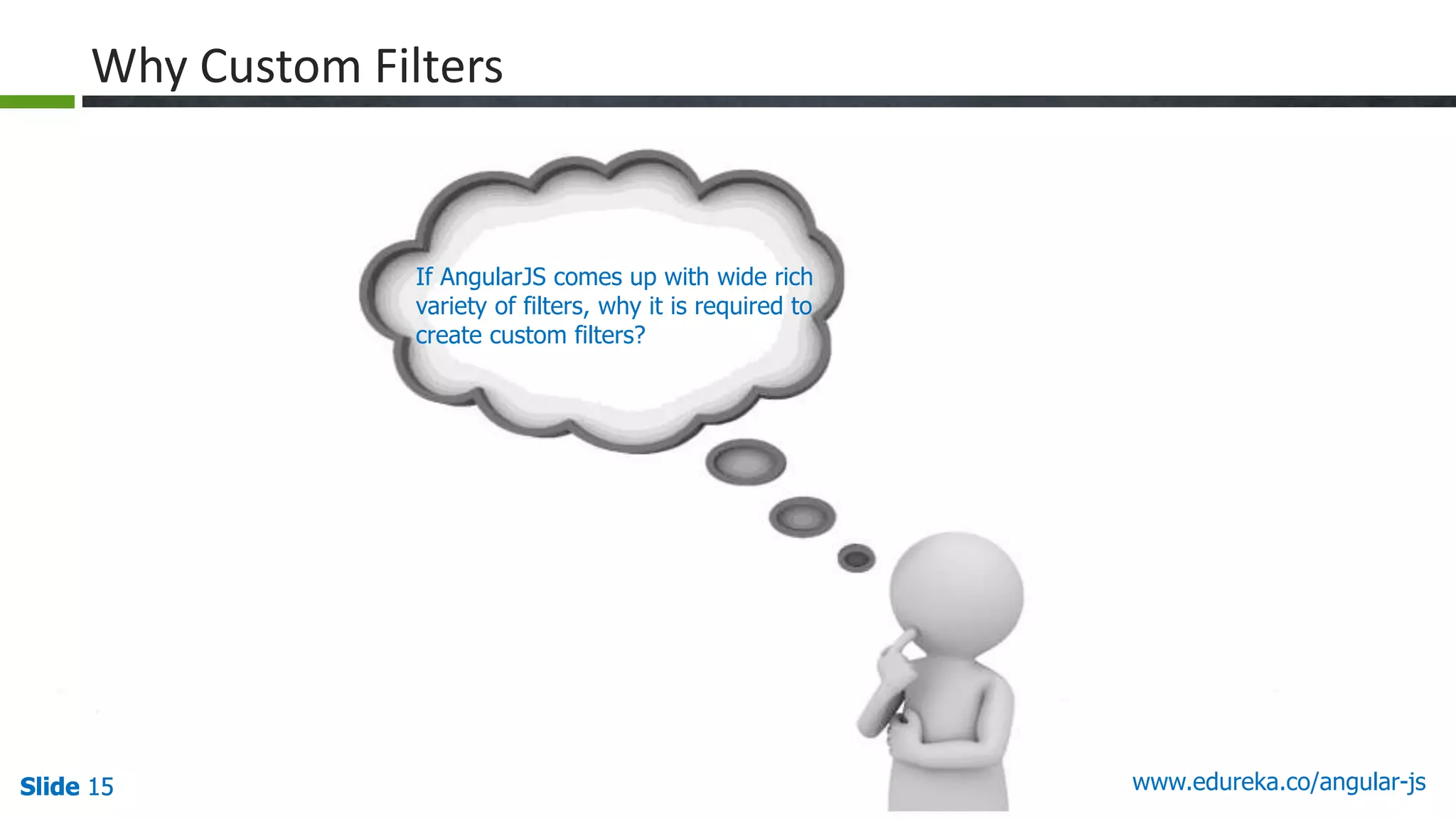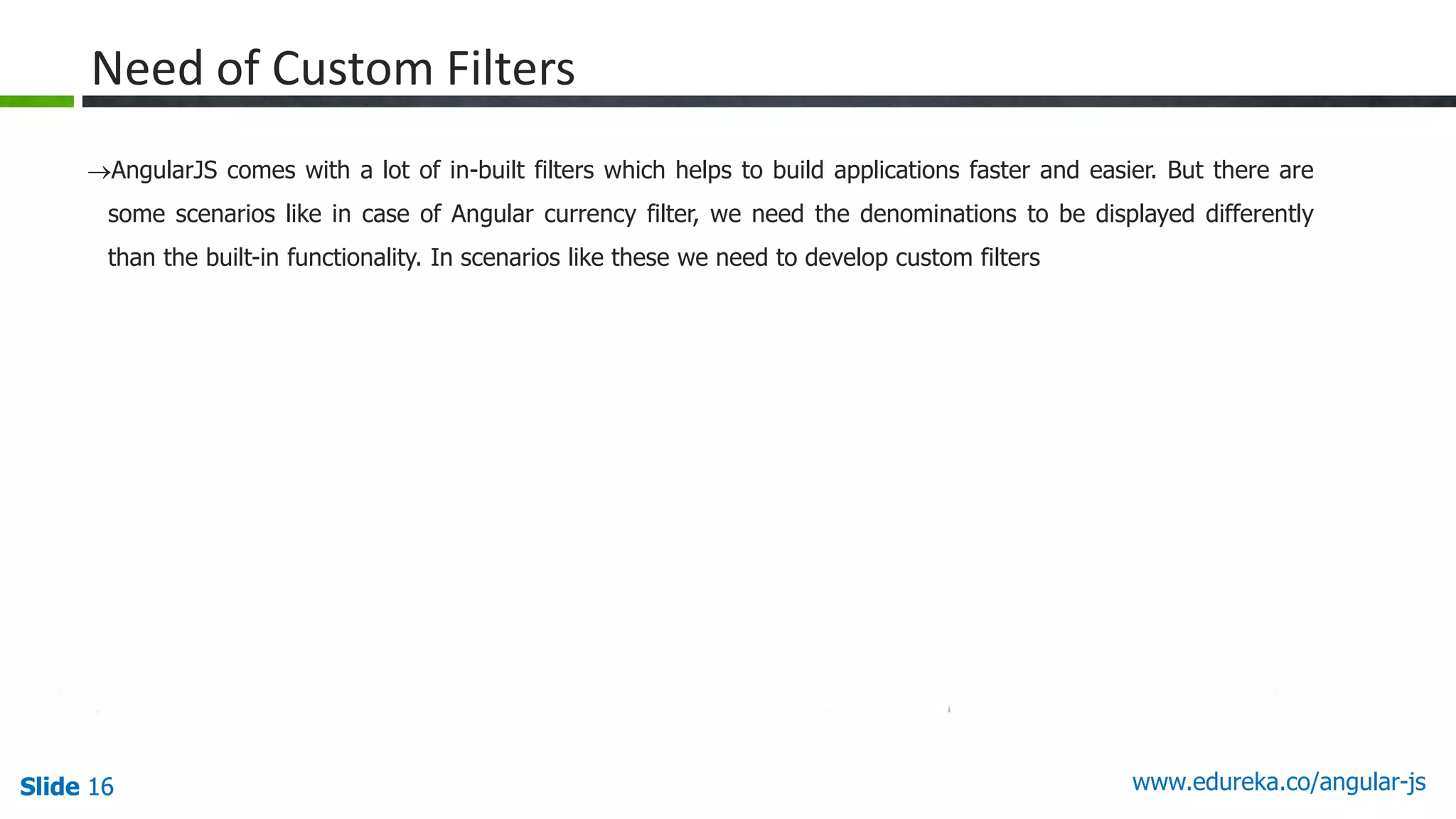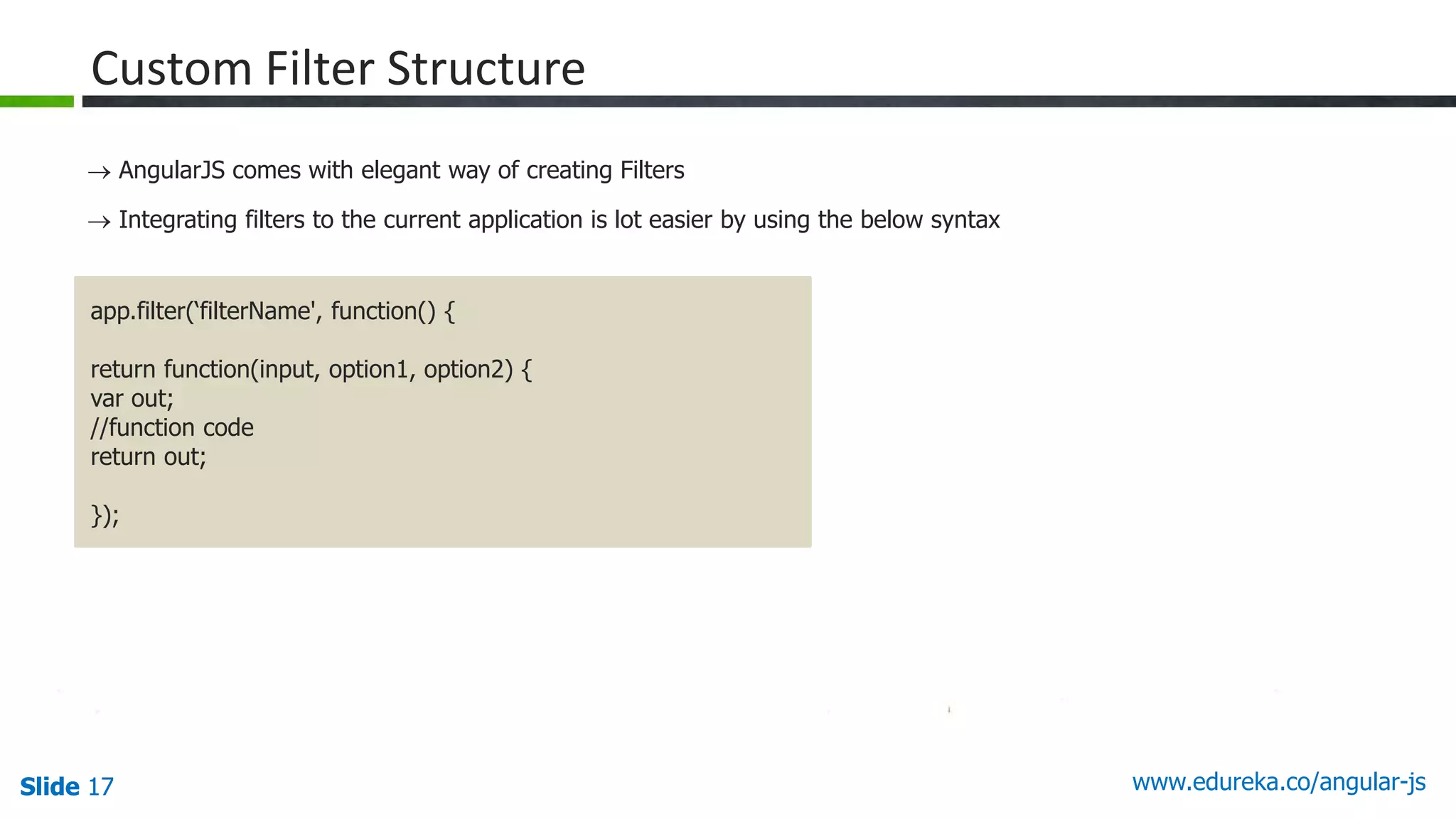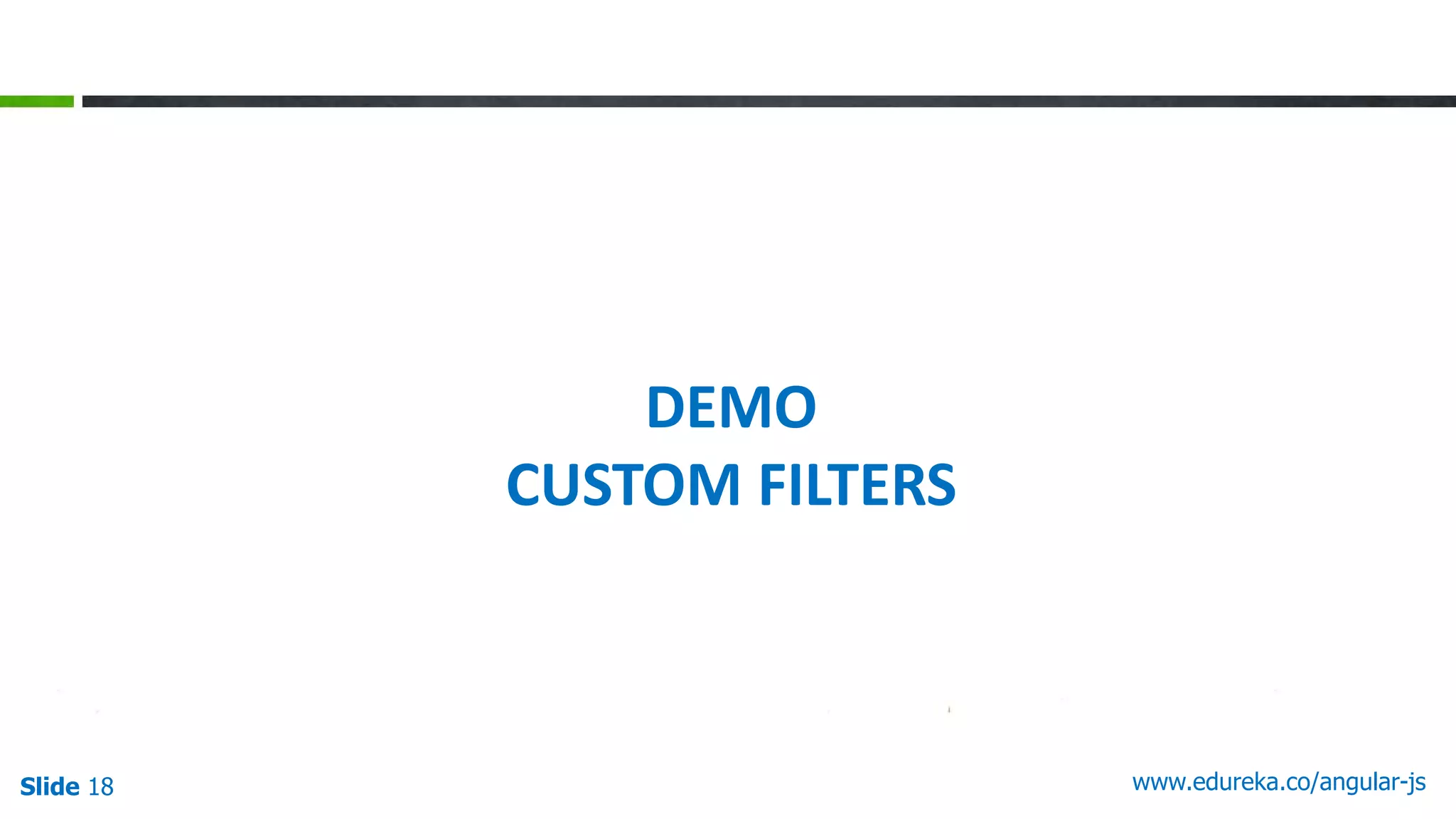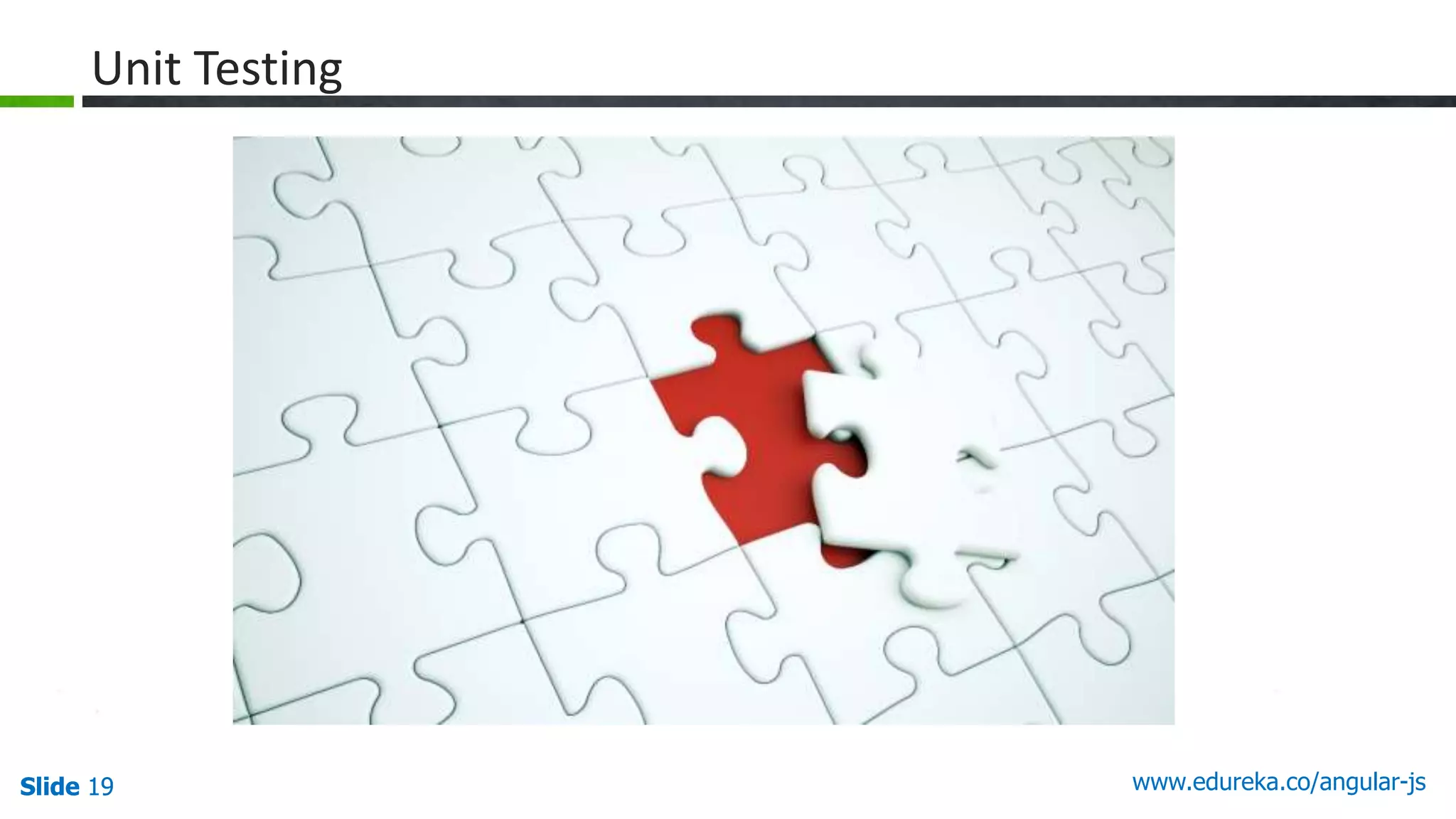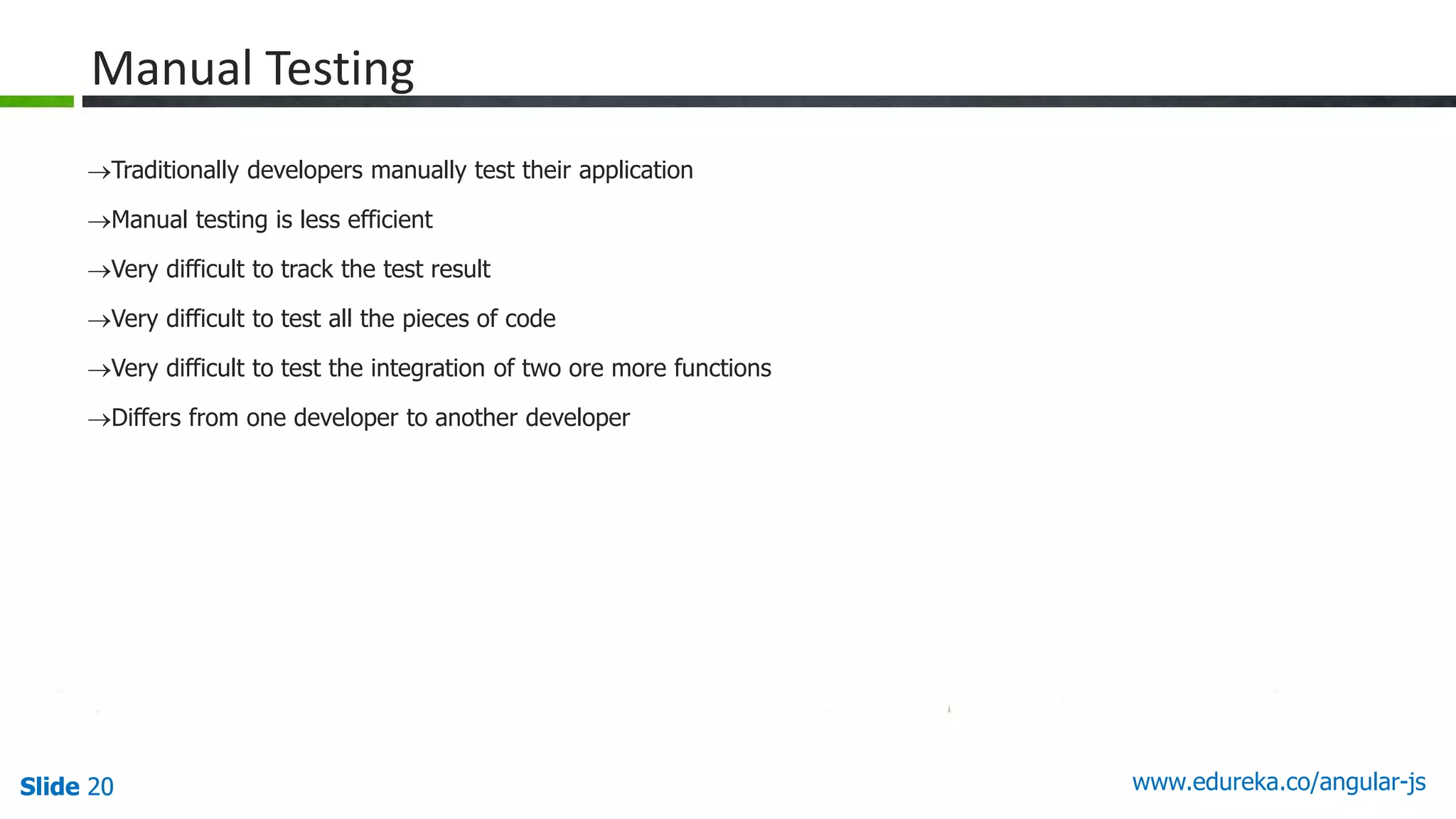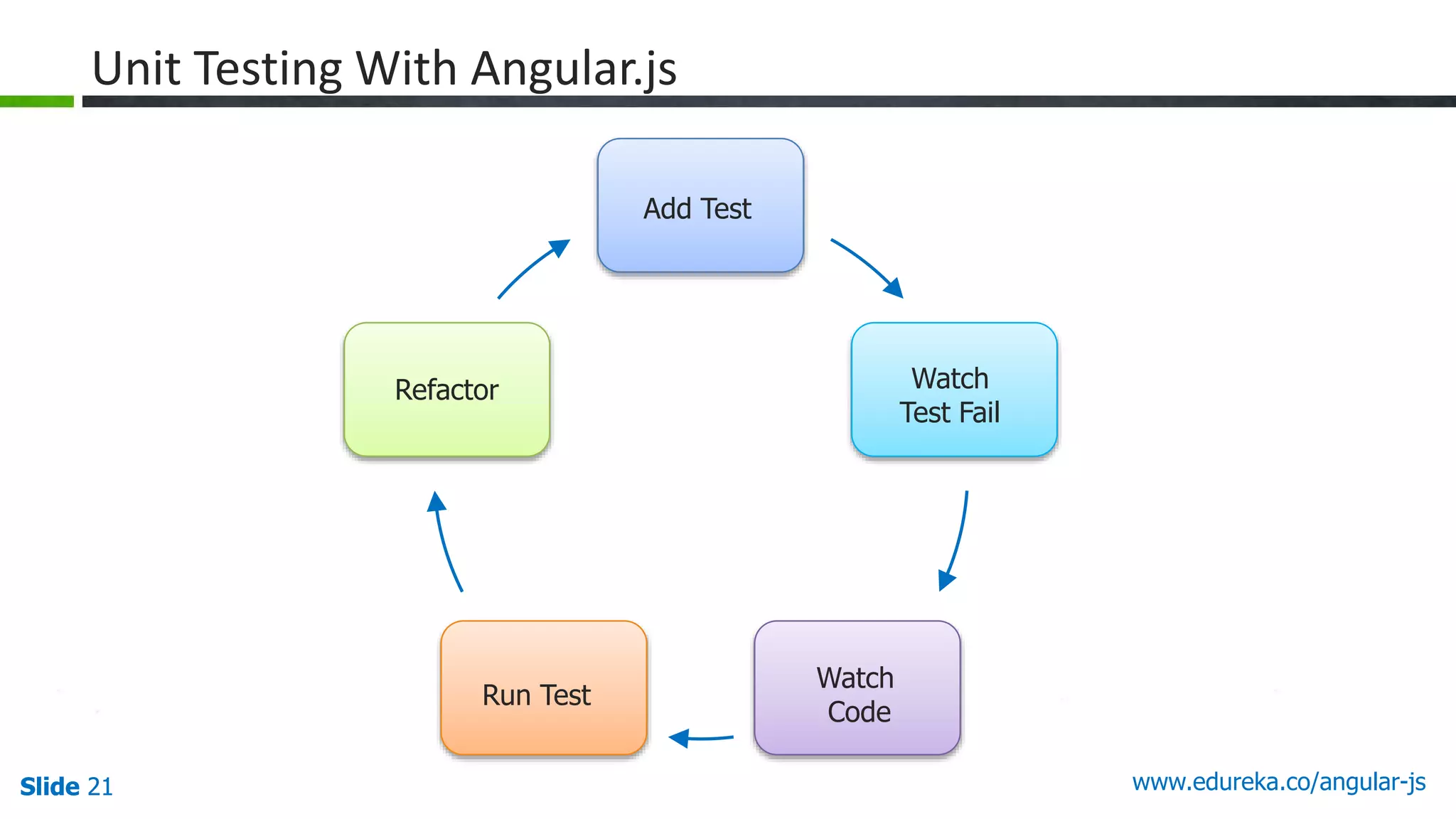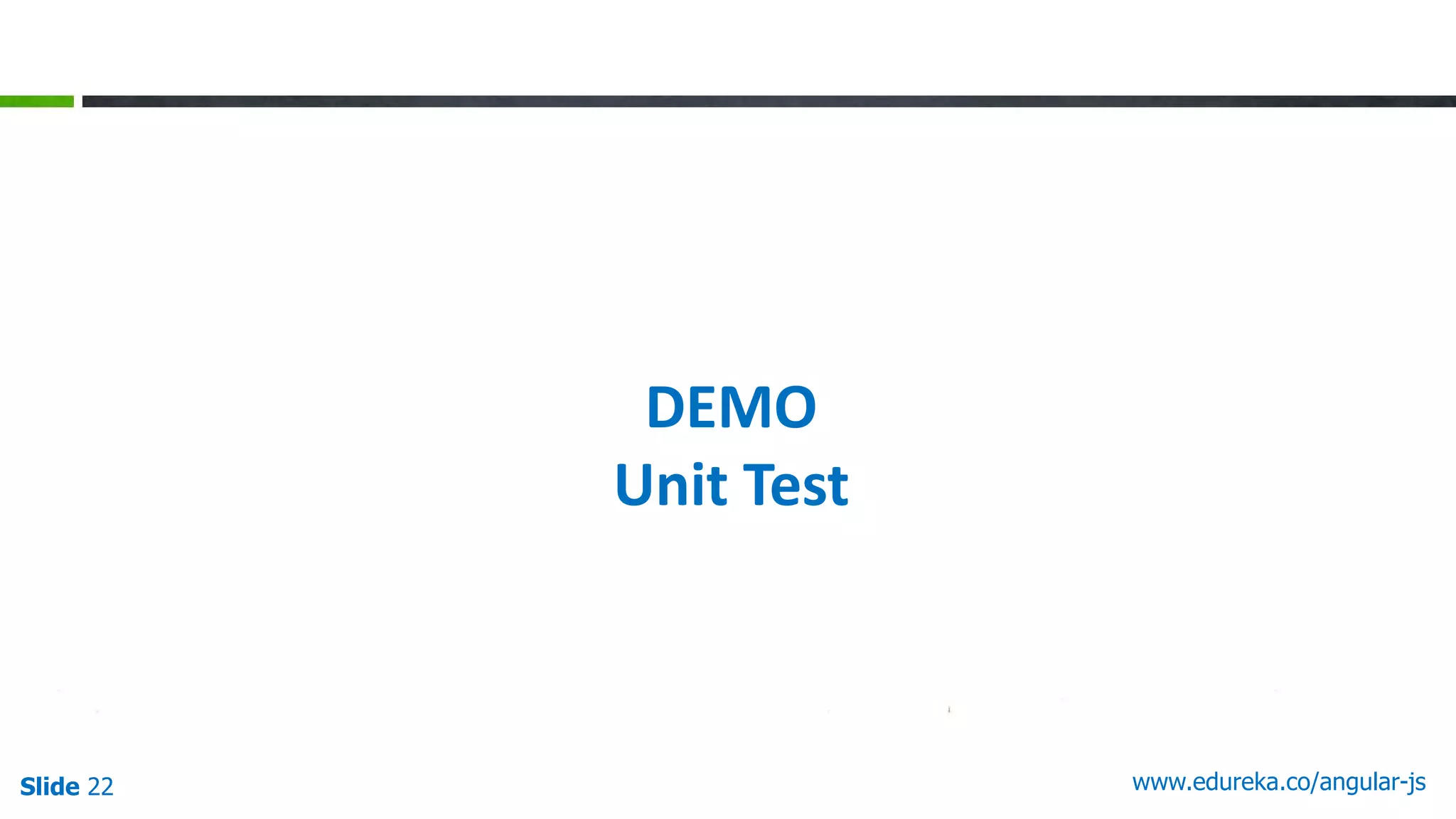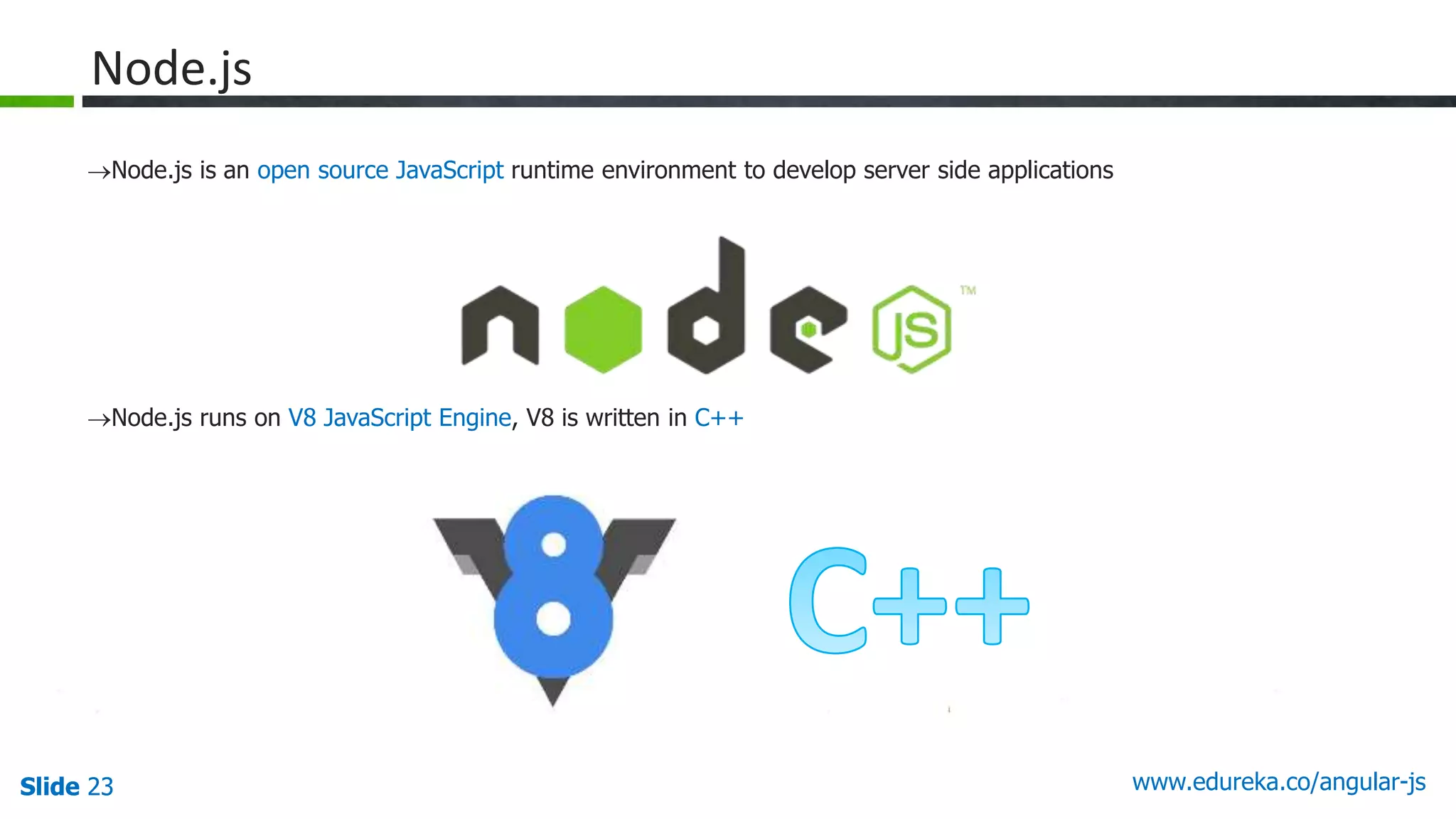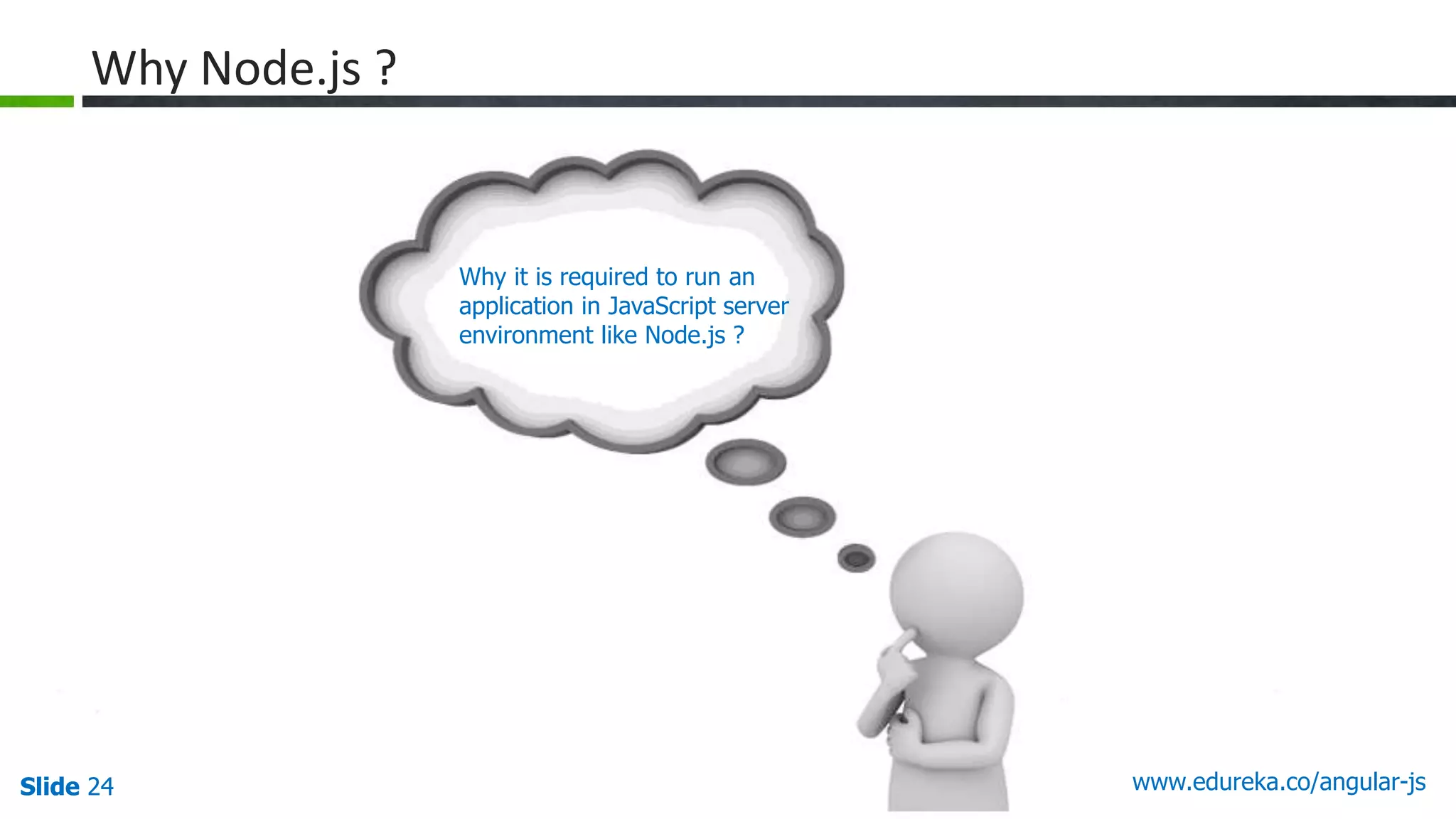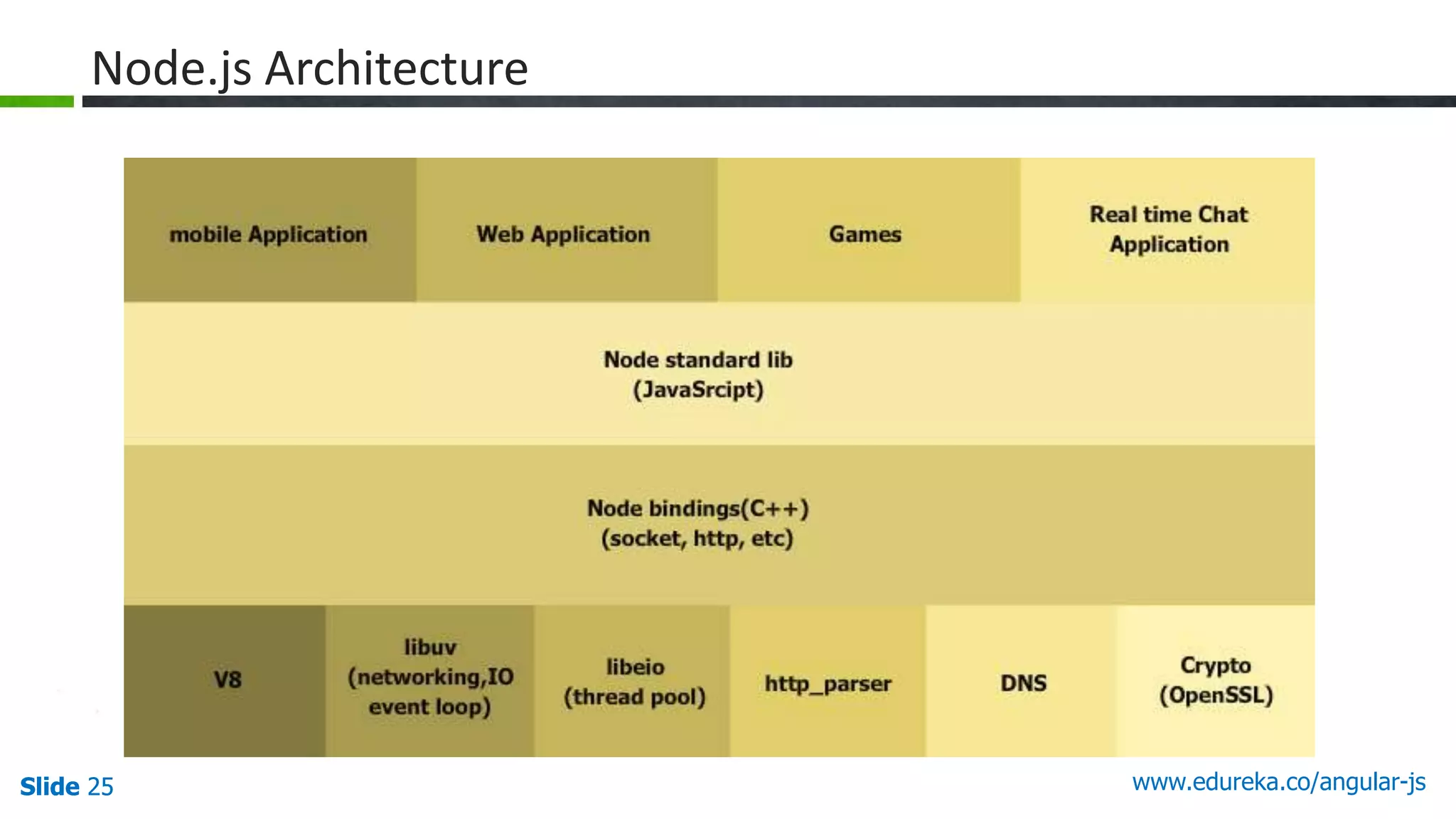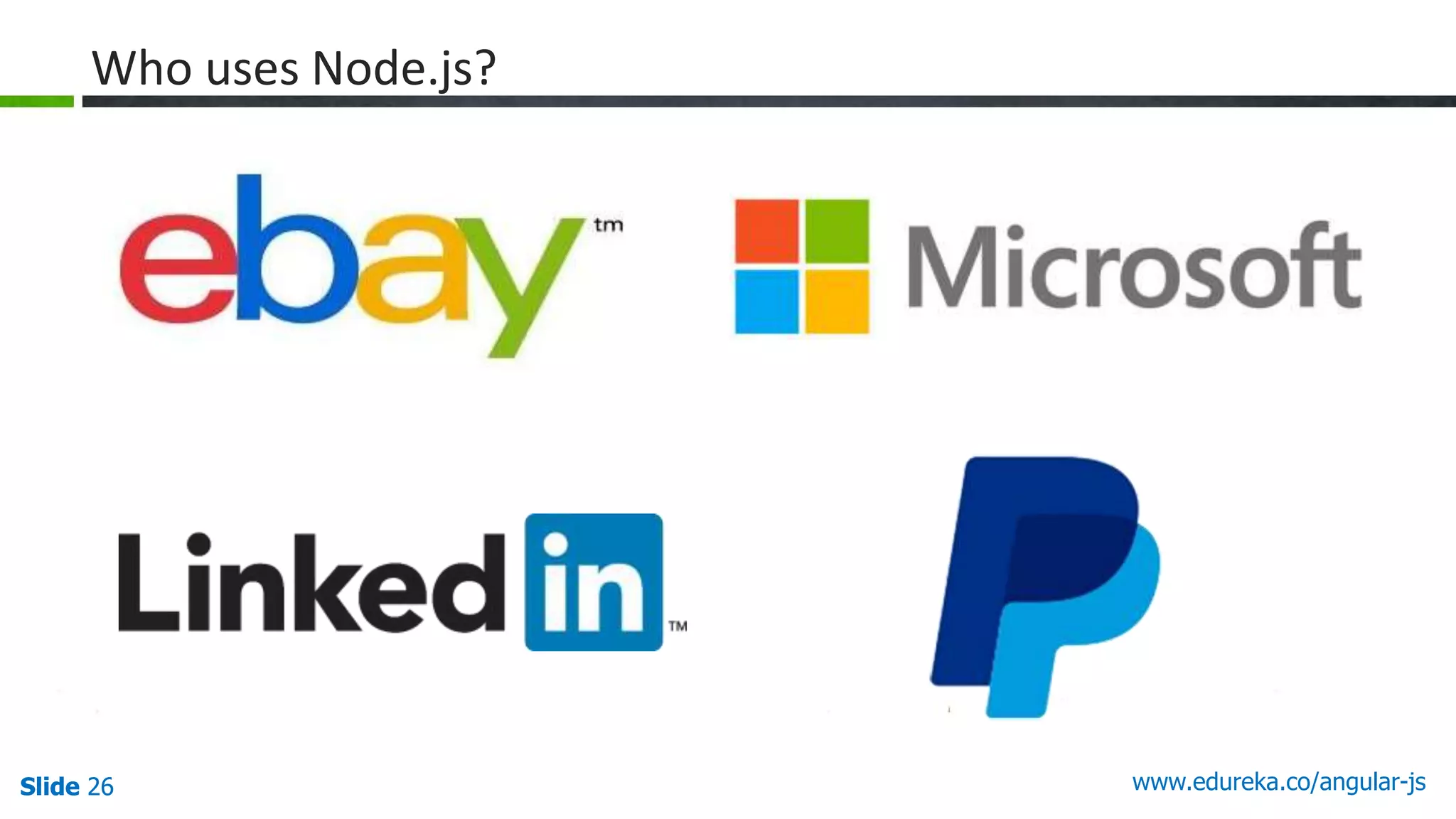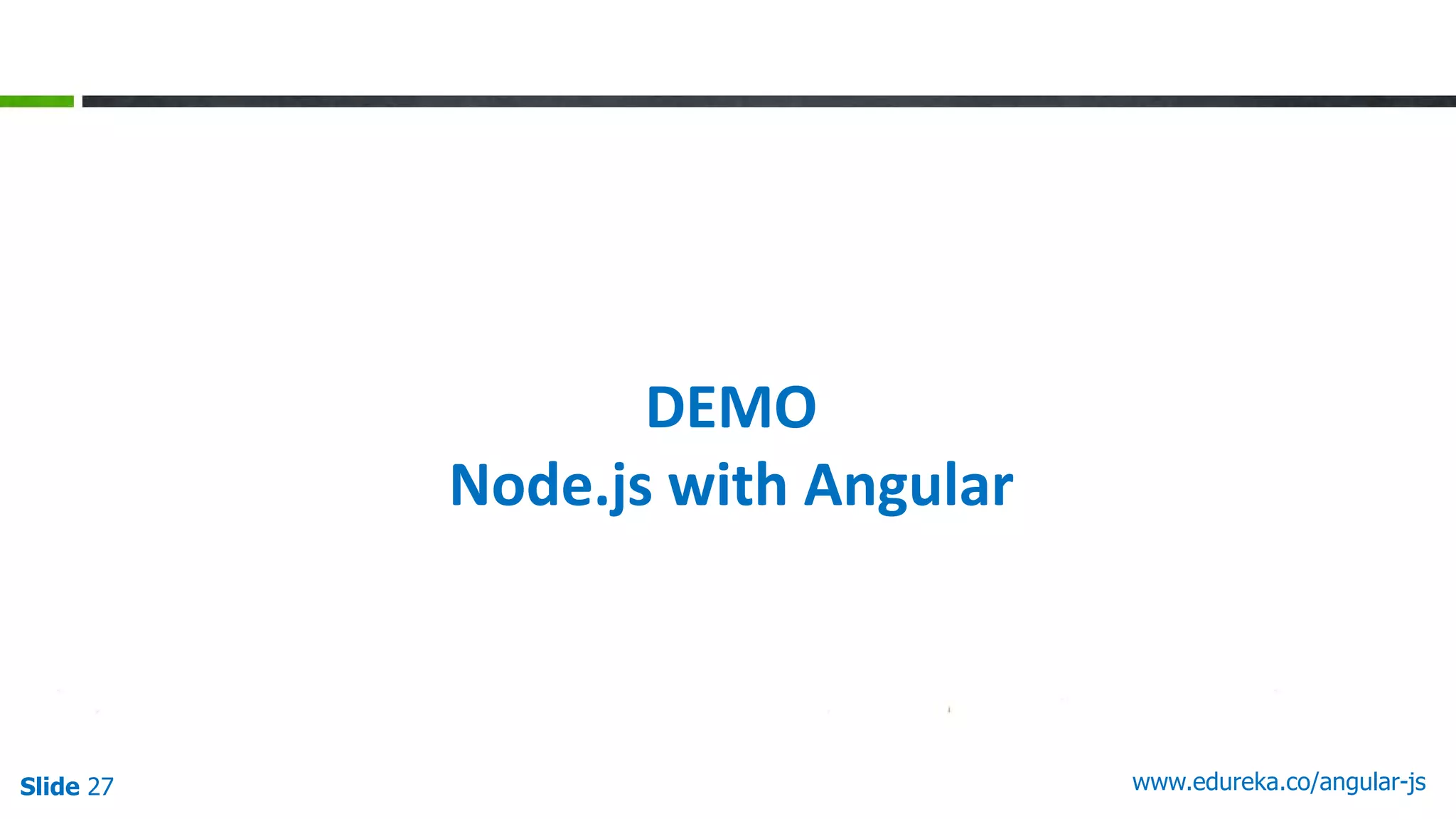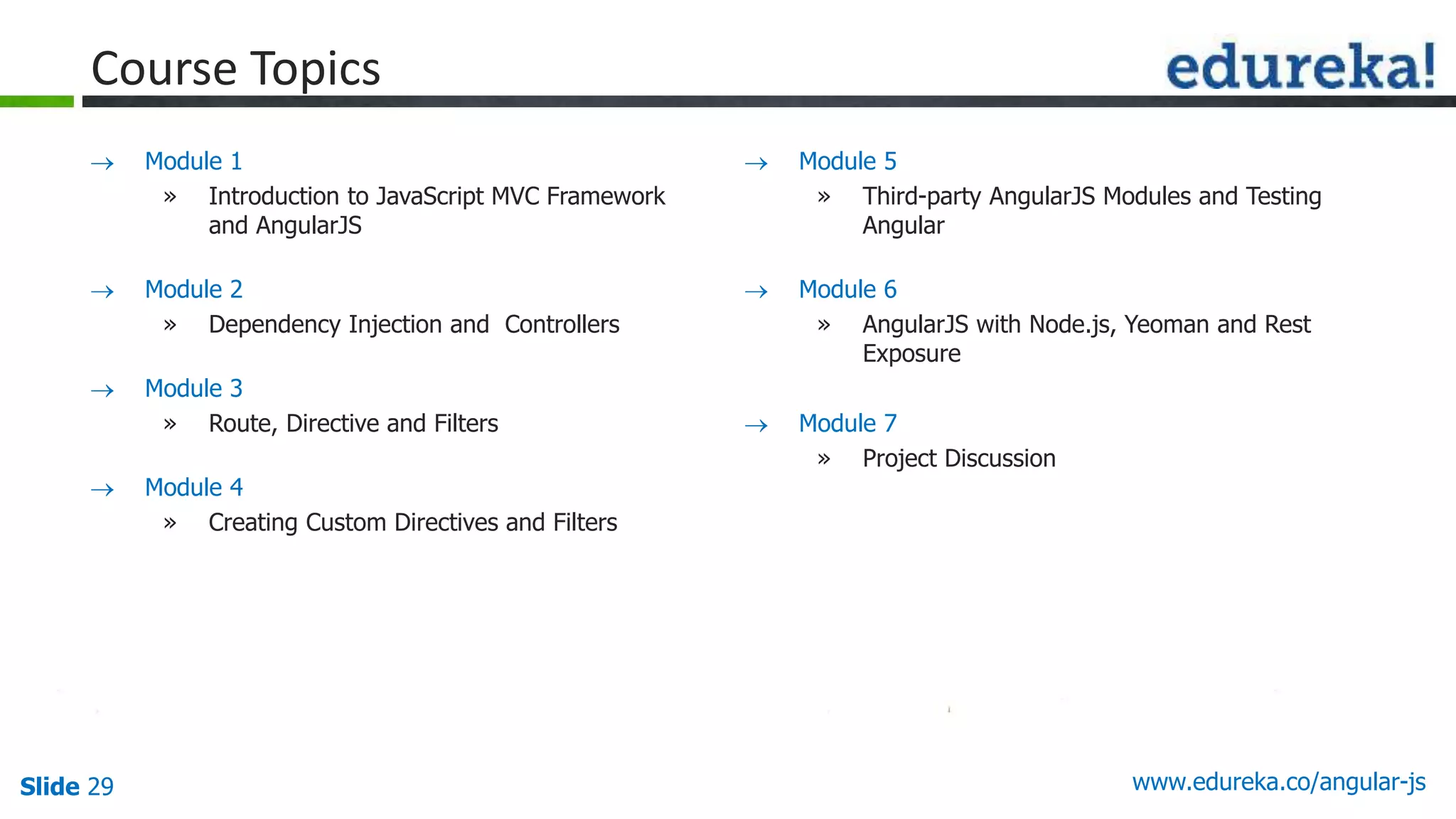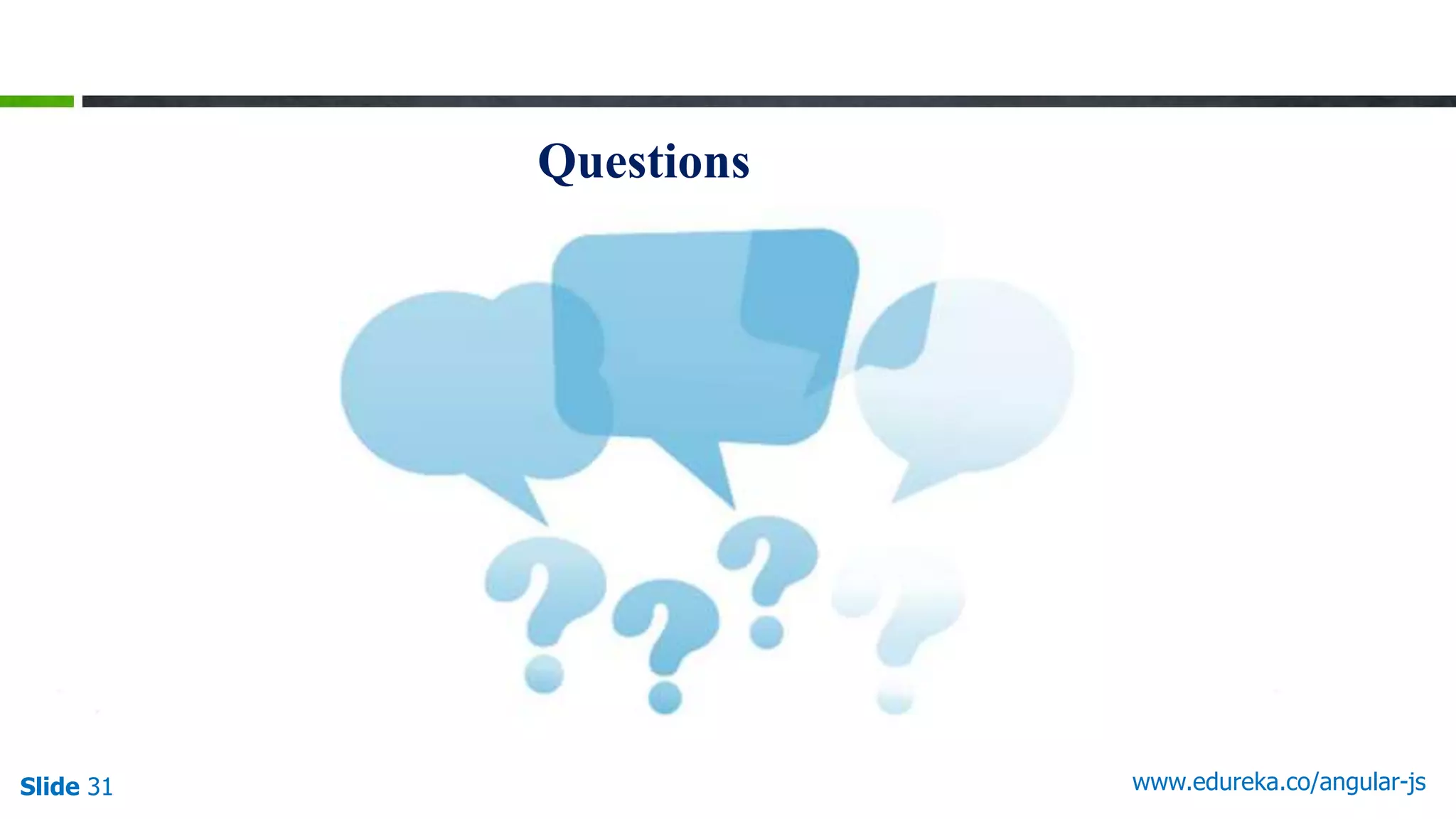The document details an AngularJS course, including objectives like understanding controllers, data binding, directives, and testing. It outlines course modules and demonstrates AngularJS features with practical examples. The document also mentions a limited-time promotional offer with a discount for course enrollment.
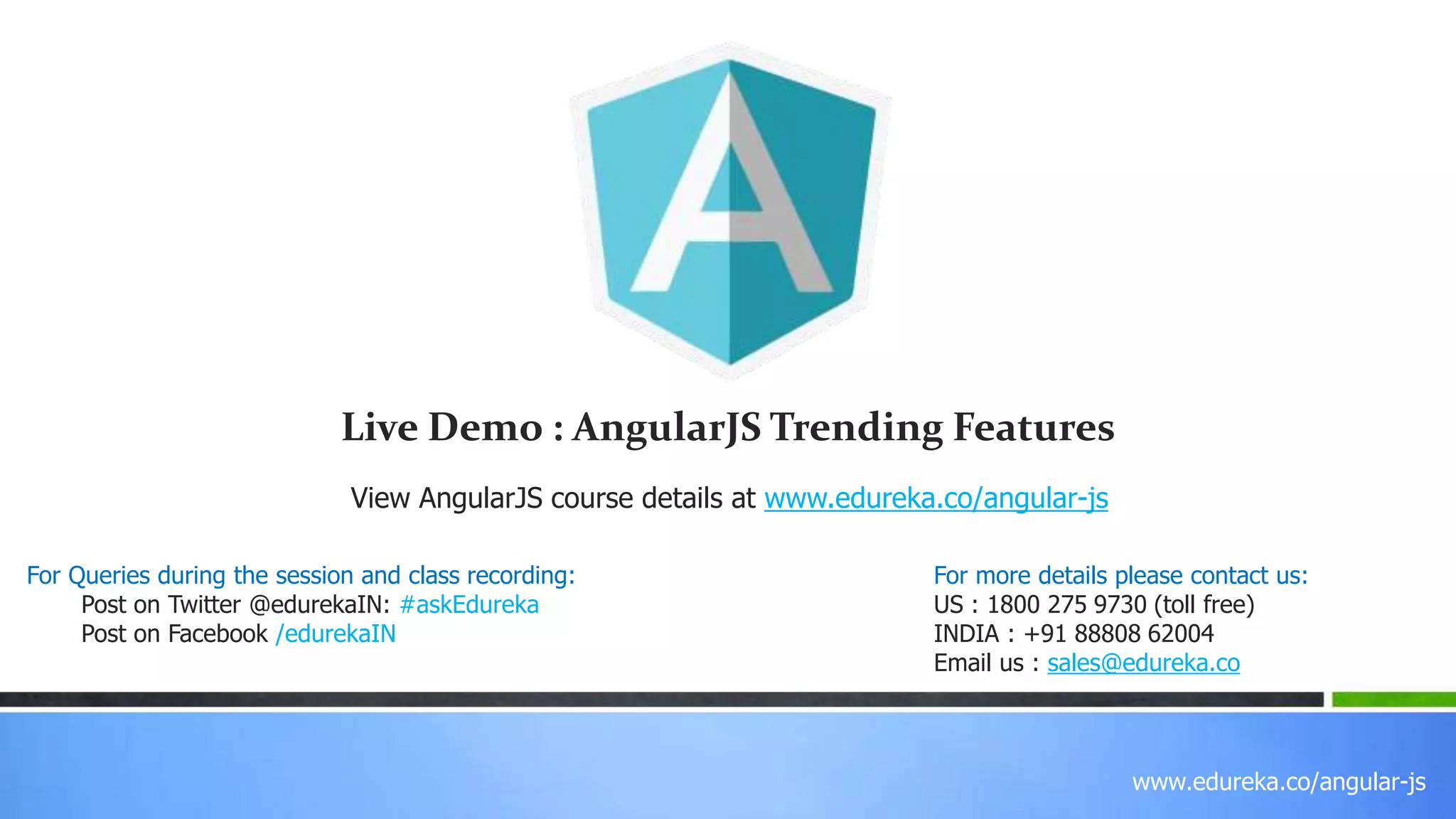
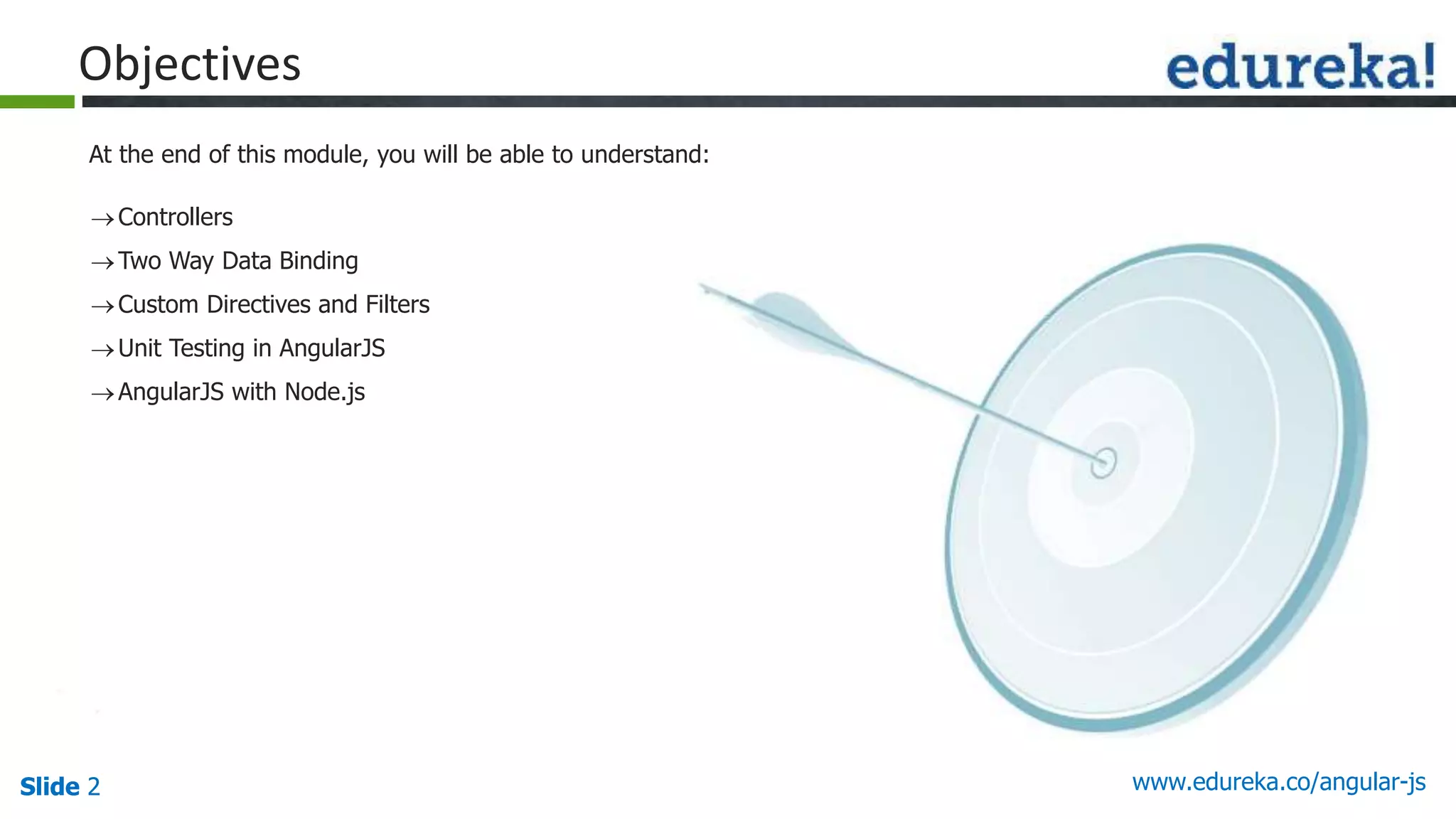
![Slide 3 www.edureka.co/angular-jsSlide 3
Controllers in AngularJS define the workflow presentation logic
A JavaScript object
Created by a standard JavaScript object constructor
Attached to the view with ng-controller
Controllers can be defined in the application as shown
<div ng-controller=“MyController">
<body ng-controller=“MyController">
Controllers
Defining Controller
Using Controller in application
var myApp = angular.module('myApp',[]);
myApp.controller(‘MyController'.......](https://image.slidesharecdn.com/angularjswp12thmay-150513050900-lva1-app6892/75/Live-Demo-Trending-Angular-JS-Featues-3-2048.jpg)
![Slide 4 www.edureka.co/angular-jsSlide 4
Injected as an argument to the controller function
Holds the model data required by the view
Binds data to the view using AngularJS two way data binding
Represented by $scope in the controller function and links the controller to the view
Figure shown is representation of scope
app.controller(‘MyController', ['$scope',
function($scope) {
…………………..
]};
}]);
Scopes](https://image.slidesharecdn.com/angularjswp12thmay-150513050900-lva1-app6892/75/Live-Demo-Trending-Angular-JS-Featues-4-2048.jpg)

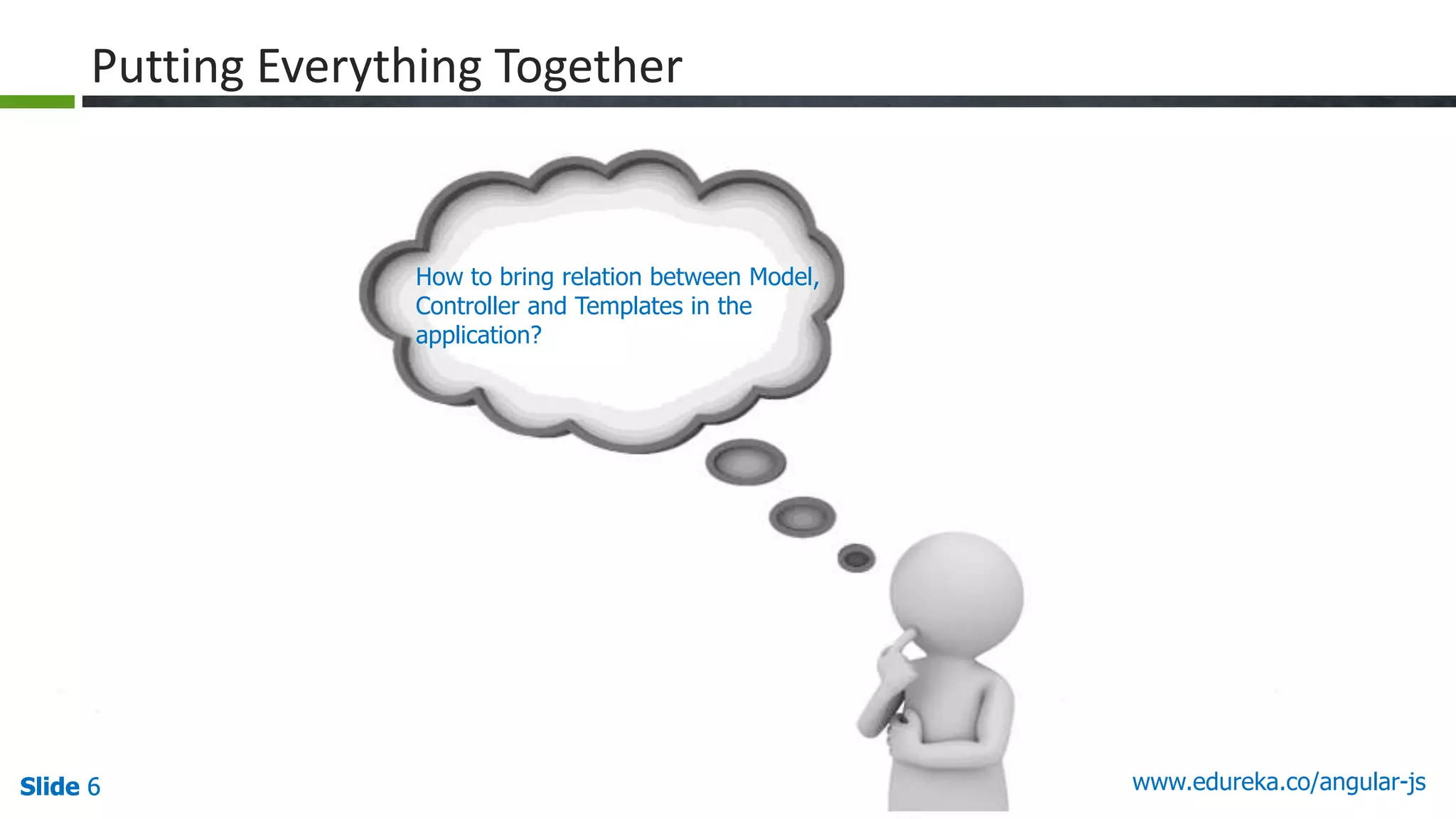
![Slide 7 www.edureka.co/angular-jsSlide 7Slide 7Slide 7
app.controller('ProductsController', ['$scope', function($scope) {
$scope.product = {
id: 1,
name: 'Smart Phones‘,
type: ‘Mobile‘,
stores: [
{ id: 1, name: 'Samsung Galaxy', quantity: 5},
{ id: 2, name: 'Nokia', quantity: 3},
{ id: 3, name: 'HTC', quantity: 6}
]
};
}]);
Controller Scope Injection
Model
Controller Structure](https://image.slidesharecdn.com/angularjswp12thmay-150513050900-lva1-app6892/75/Live-Demo-Trending-Angular-JS-Featues-7-2048.jpg)
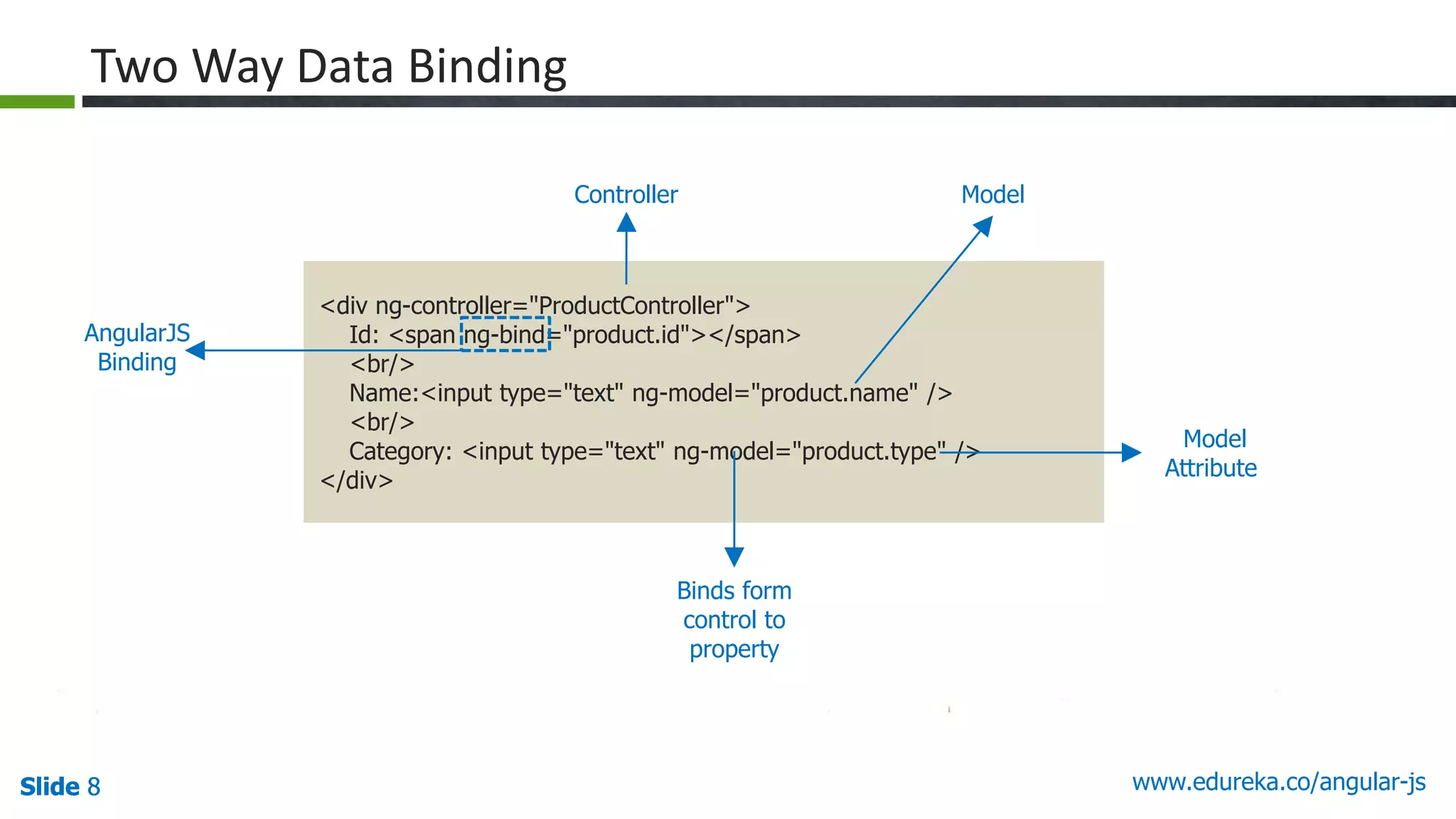
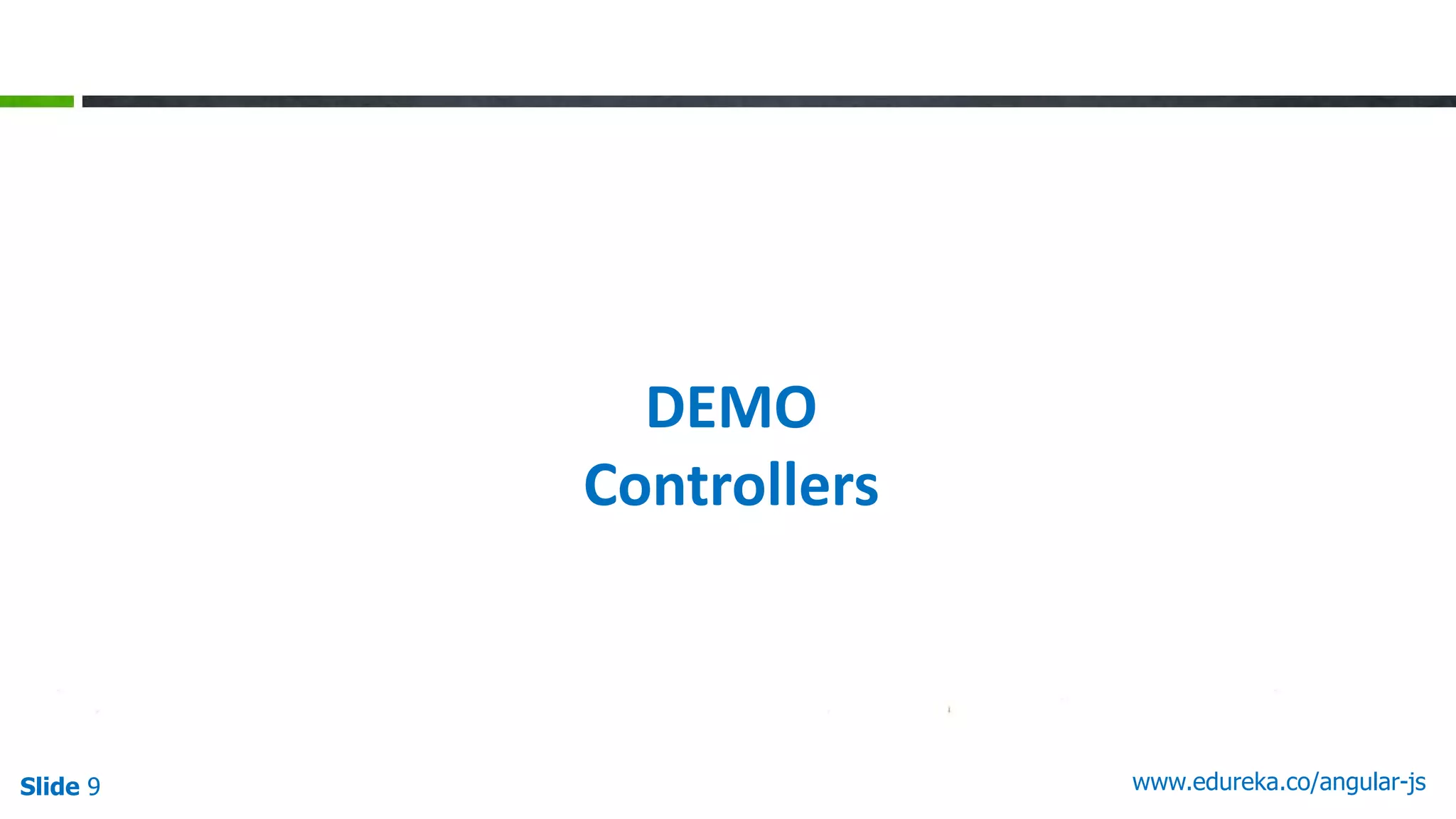
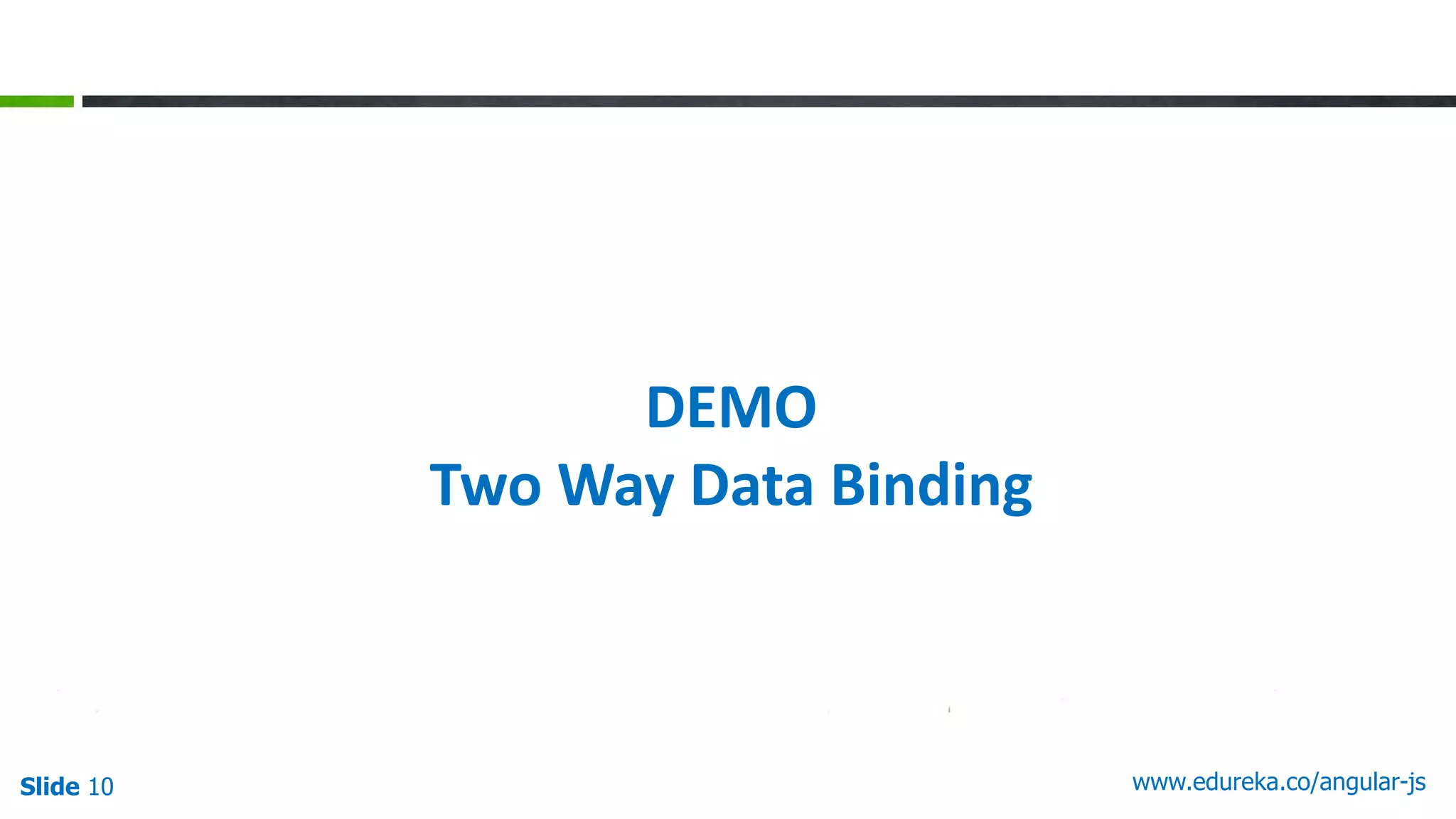
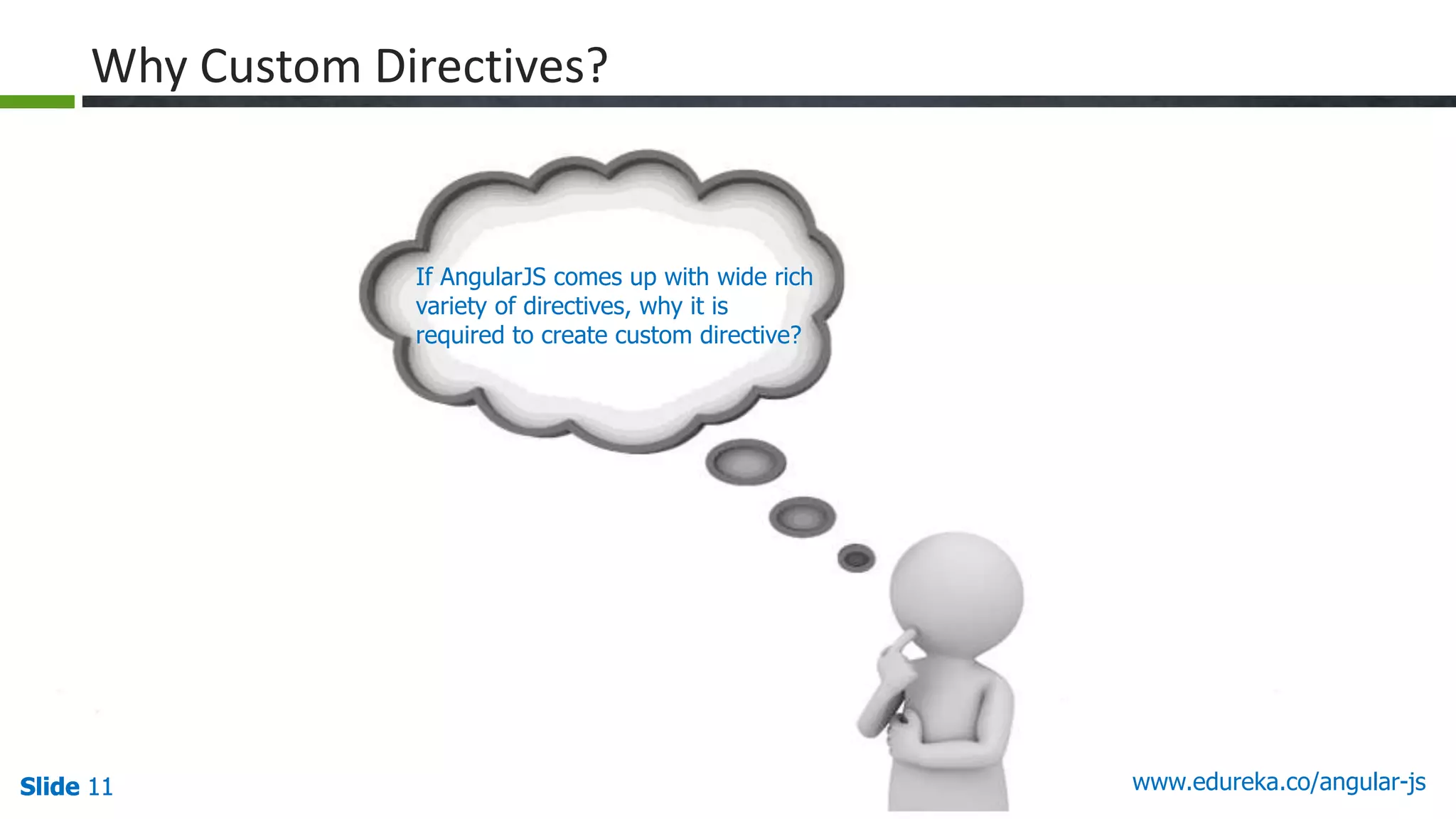
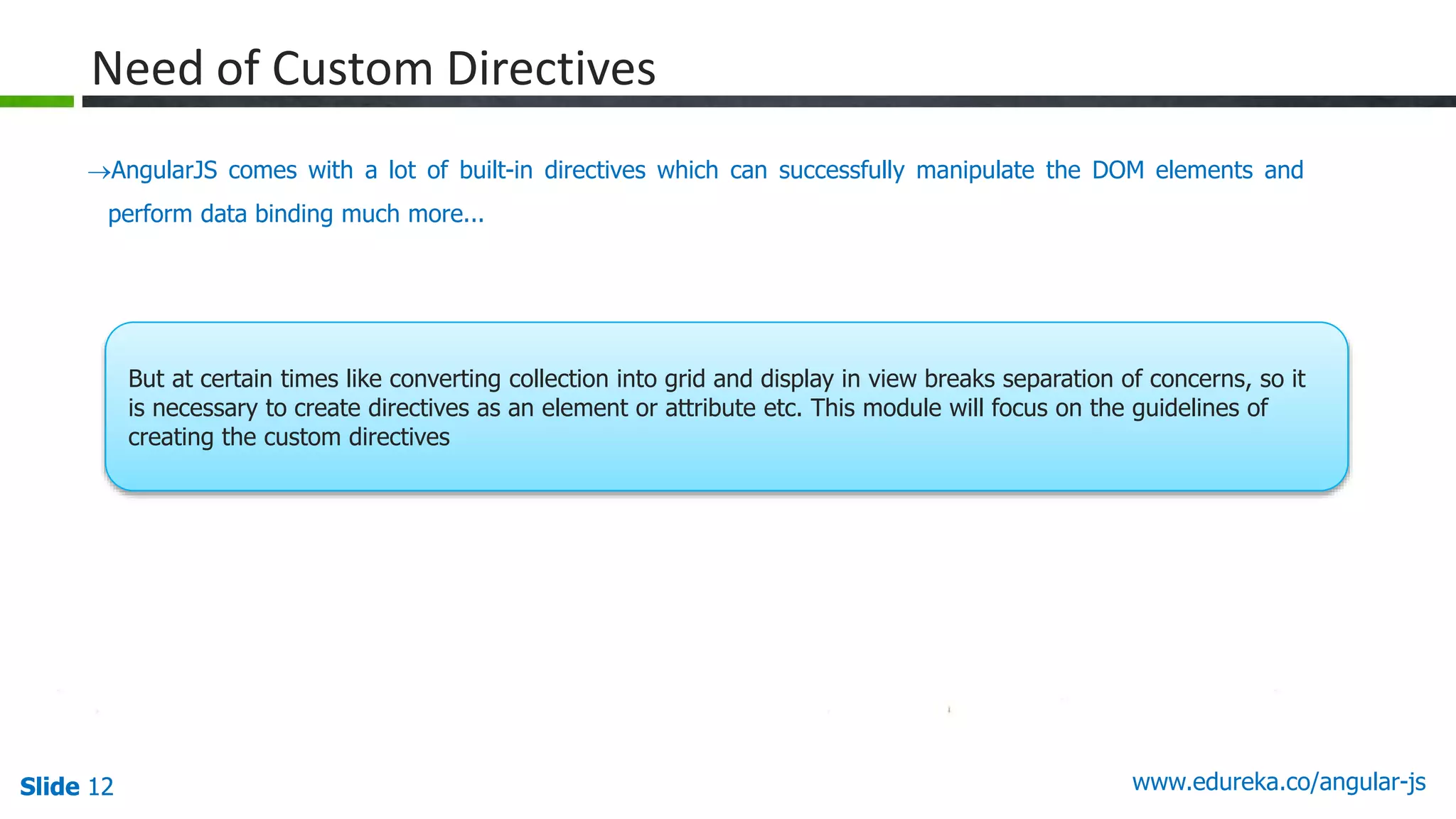
![Slide 13 www.edureka.co/angular-jsSlide 13
Custom Directive Usage
For a module “MyAppModule” a directive with restrict option will be done in the following way
angular.module(MyModule', [])
.directive(‘myDirective', function () {
return {
restrict: 'A',
link: function (scope, elem, attrs) {
}
}
Module Definition
Directive
Definition
Restrict
Option](https://image.slidesharecdn.com/angularjswp12thmay-150513050900-lva1-app6892/75/Live-Demo-Trending-Angular-JS-Featues-13-2048.jpg)
